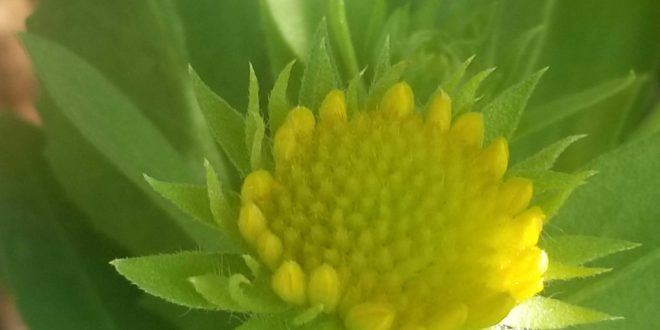Gaillardia, or Blanket Flower, is an easy to grow, short-lived perennial with richly colored, daisy-like flowers. There are over two dozen species of Gaillardia and most are native to some area of North America. Gaillardia pulchella, which is native from the southeastern U.S. through to Colorado and south into Mexico, was cross-bred with Gaillardia aristata, a prairie flower, to create Gaillardia X Grandiflora. Most of the modern blanket flowers we grow in our gardens are the hybrid Gaillardia X Grandiflora. The flower can reseed and sprawl through the garden. Since the original plants are hybrids, expect some variation from self-seeding.
Botanical Name: Gaillardia x Grandiflora
Common Name: Blanket Flower, Indian Blanket Flower
Plant Type: Perennial
Mature Size: 12 to18 inches high and 12 to 24 inches wide
Sun Exposure: Full sun
Soil Type: Well-draining soil, avoid clay soil
Soil pH: 6.1 to 6.5
Bloom Time: A long season of bloom, repeat flowering from mid-summer through fall
Flower Color: Various shades of red, yellow, orange, or peach. Some have petals surrounding a center disk which produces florets. Others have trumpet-shaped florets surround the entire disk.
Hardiness Zones: 3 to 10, but hardiness does depend on the variety and the growing conditions
Native Area: North America
How to Grow Blanket Flowers
Gaillardias are such long bloomers, they work equally well in borders and containers. Blanket flowers do well with other heat-loving plants that thrive in full sun. The bold, daisy-like flowers blend especially well with soft textures, like thread-leaf Coreopsis and cosmos, as well as airy ornamental grasses. For more contrast, plant with spiky plants like Kniphofia, Crocosmia or daylilies. ‘Burgundy’ contrasts well with blue flowers, like Salvia and Veronica.
All the Gaillardia varieties make excellent cut flowers. They also attract butterflies and small birds, like finches, which can be a welcome addition to any garden.
Light
Full sun is what these plants love best! The blanket flower can handle some partial shade, particularly in hot climates, but they will get a bit floppy and will not flower as profusely.
Soil
Gaillardia is not particular about soil pH, but it does need well-draining soil. It will grow in somewhat moist conditions, but heavy clay soil will probably kill it.
Water
When just planting, water frequently (every other day or so) until you see the flowers. Once established, Gaillardia is extremely drought tolerant. It can go without watering unless there are extremely hot and dry conditions, then it’s best to water the bed once or twice per week. Avoid overwatering.
Temperature and Humidity
Blanket flowers thrive in full sun and can withstand hot summer temperatures. They do not require a humid environment and do better in hot, dry climates over cool, moist ones.
Fertilizer
Poor soils seem to encourage more flowering than rich soils, so go easy on (or avoid) the fertilizer.
Propagating Blanket Flowers
There are seeds for of many Gaillardia x Grandiflora varieties. You can sow them in the spring, but they may not flower the first year. Get a head start by sowing in late summer and protecting the young plants over the winter.
Blanket flower is more commonly grown from purchased plants. Since the plants can be short-lived and they don’t grow true from seed, it is best to divide the plants every two to three years, to keep them going.
Blanket Flower Varieties
Gaillardia ‘Arizona Sun’: 2005 All-America Selections Winner, these 3 to 4-inch flowers have a red center surrounded by yellow.
Gaillardia ‘Burgundy’: These feature wine-red petals with a yellow center disk that ages to burgundy.
Gaillardia ‘Fanfare’: This variety produces trumpet-shaped flowers that shade from soft red through yellow radiate from a rosy center disk.
Gaillardia ‘Goblin’: This is a very hardy variety with large green leaves that are veined in maroon.
Gaillardia ‘Mesa Yellow’: The 2010 All-America Selections Winner is known for striking yellow flowers.
Pruning
Blanket flower does not require deadheading to keep blooming, but the plants will look better and be fuller if you do cut the stems back when the flowers start to fade. You will also get more continuous flowering with deadheading, so don’t be shy about it. Divide Gaillardia plants every two to three years to keep them from dying out.
Pests & Problems of Gaillardia
Blanket flower plants are usually problem-free, but they are susceptible to aster yellows, a virus-like disease that can stunt their growth and cause the flowers to be green. Aster yellows is spread by leaf-hoppers and aphids, so the best thing to do is to encourage predators, like ladybugs. Plants that do get aster yellows should be destroyed. They will not recover and the disease can continue to spread. Leafhoppers and aphids can spread disease. Hopefully, you will have enough natural predators around to keep them in check. Otherwise, spray with insecticidal soap which helps ward off the pests.








